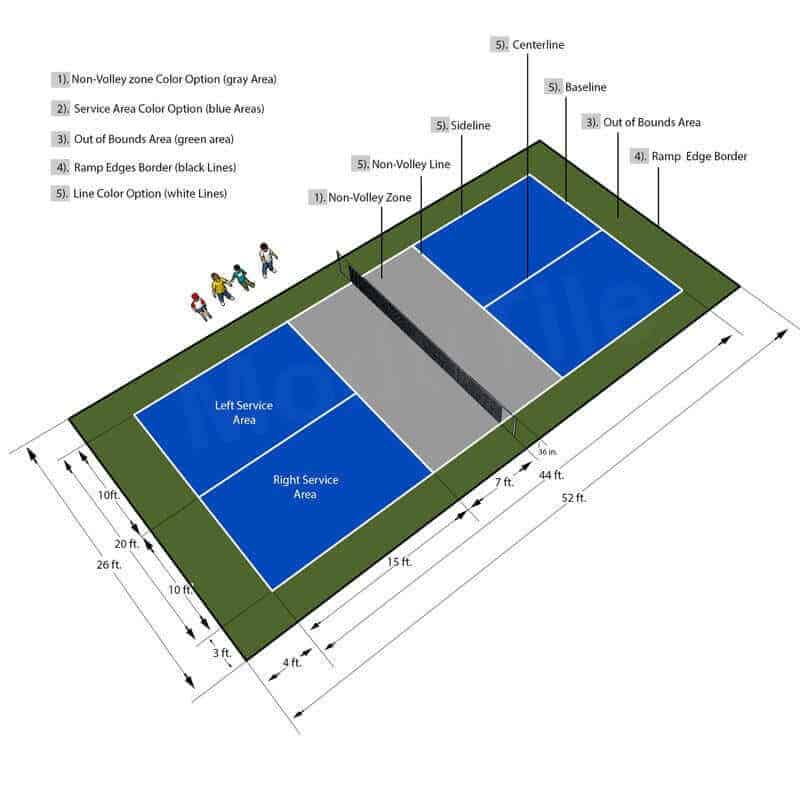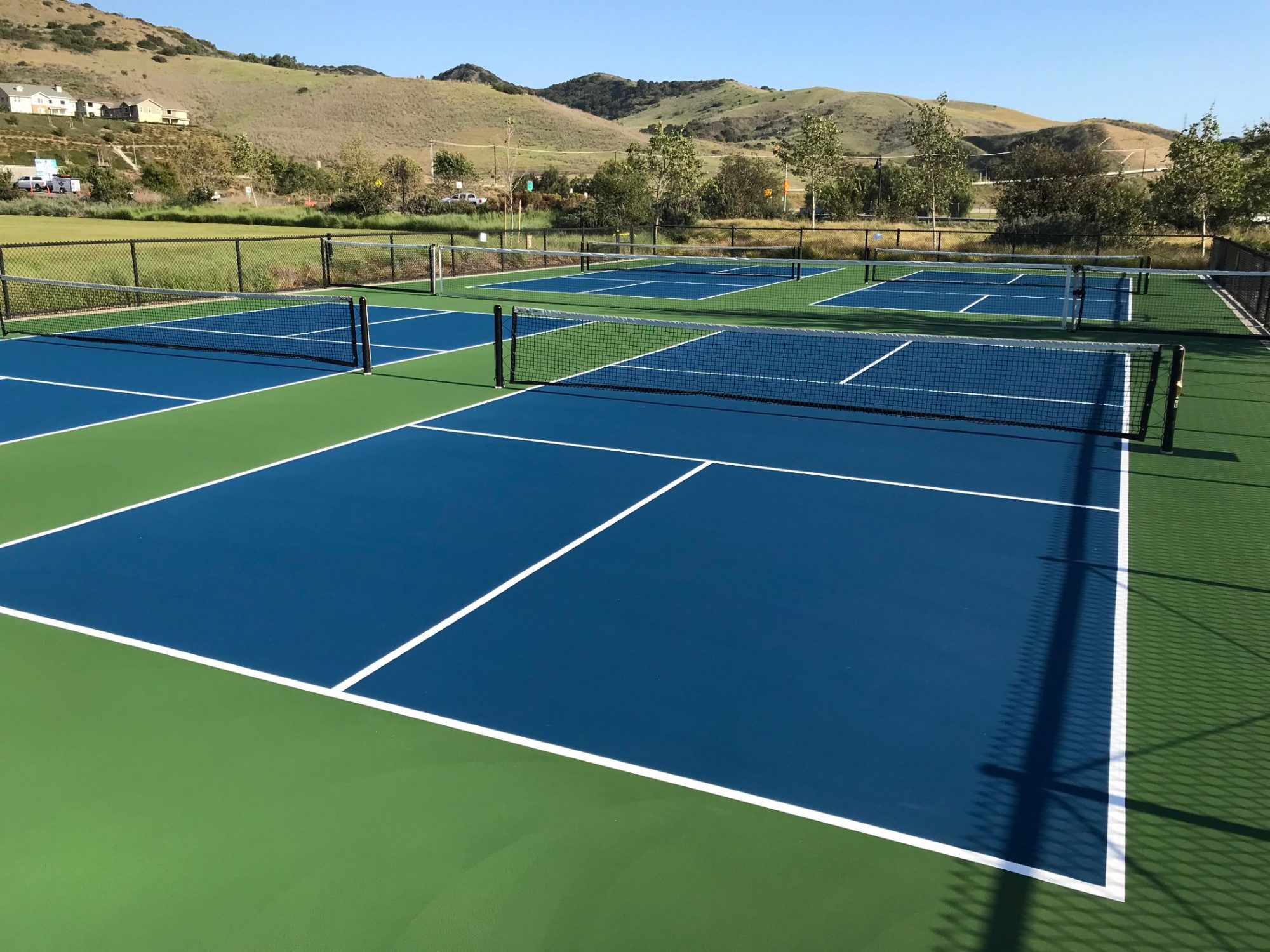Common Mistakes to Avoid in Your Pickleball Court Construction Process
Common Mistakes to Avoid in Your Pickleball Court Construction Process
Blog Article
Boost Local Involvement With Community-Driven Pickleball Court Projects
The emergence of community-driven pickleball court tasks provides an unique possibility to promote regional involvement and enhance area ties. By proactively involving residents in the preparation and implementation phases, such campaigns not only create leisure areas but likewise promote a shared sense of ownership. Understanding the actions to initiate these jobs, including efficient stakeholder engagement and source allotment, is crucial. The real concern remains: just how can these grassroots initiatives be strategically carried out to ensure sustainability and inclusivity in diverse communities? Exploring successful instance studies may offer the understandings needed to answer this critical worry.
Importance of Community Engagement
Community engagement is a critical component in the successful advancement of pickleball court jobs, as it cultivates a sense of ownership and collective responsibility amongst homeowners. When area members are proactively associated with the preparation and application stages, they are more probable to advocate for the project's long-term success. Involving stakeholders such as regional players, families, and entertainment teams makes sure that the facilities meet the varied demands and choices of the neighborhood.
Moreover, area involvement cultivates an encouraging setting where citizens feel encouraged to contribute their ideas and sources. Pickleball court construction. This collective method can lead to ingenious solutions that boost the style and functionality of the courts, making them a lot more attractive to a larger audience. Furthermore, involving homeowners in decision-making processes can enhance social ties, advertising inclusivity and unity within the neighborhood
The visibility of neighborhood support for a pickleball task can likewise play a critical duty in securing financing and approval from regional authorities. By showing a common dedication to recreational advancement, areas can properly advocate for sources and policy modifications that prefer the establishment of pickleball courts, ultimately enhancing the neighborhood culture and entertainment landscape.
Steps to Start a Project
Starting a pickleball court task requires an organized approach that develops on the foundation of neighborhood involvement established in previous discussions. The initial action is to put together a job board comprising regional stakeholders, lovers, and reps from appropriate companies. This varied group guarantees that numerous point of views are thought about.
Following, perform a requirements analysis within the area. Surveys, focus groups, and public meetings can be effective in evaluating rate of interest and celebration input on potential court locations, desired services, and organizing choices. Following this, develop a project plan describing timelines, obligations, and goals.
As soon as the strategy remains in location, engage with regional authorities to recognize zoning regulations and any necessary permits. Communicating transparently with the area throughout this process is vital, as it cultivates trust fund and motivates additional involvement.
In addition, arranging neighborhood events can help maintain energy and interest. These occasions can serve as platforms for more conversation and assistance to enhance community ties. Last but not least, record every action taken and maintain in-depth documents, as this will be valuable for future stages of the project, consisting of financing and source acquisition.
Funding and Resources Available
Securing funding and resources for a pickleball court task is typically an essential action that can figure out the project's usefulness and success. Various opportunities exist for getting monetary assistance, varying from public financing to exclusive sponsorships. Neighborhood federal government gives, typically aimed at promoting community wellness and entertainment, can supply significant monetary backing for such efforts.
In addition to federal government resources, nonprofit organizations and foundations frequently use grants especially for sporting activities and area growth projects. Engaging regional companies as sponsors can additionally be a rewarding method; many companies aspire to buy neighborhood efforts that boost their business social responsibility account.
Crowdfunding systems have become a feasible alternative for grassroots fundraising, making it possible for area members to contribute the original source straight to the task. This strategy not only elevates funds yet also cultivates a feeling of ownership amongst participants.
Design and Planning Considerations
Effective design and preparation are fundamental parts of any type of successful pickleball court job complying with the procurement of financing and sources. An extensive analysis of the suggested location is important; this includes assessing ease of access, proximity to existing neighborhood facilities, and the potential for exposure and interaction.
The layout of the court should abide by main dimension specs while thinking about the surrounding atmosphere. Incorporating features such as seats, shade structures, and proper lighting can dramatically boost gamer experience and spectator pleasure. Products picked for the court surface area should focus on longevity and security, with alternatives like acrylic or asphalt offering optimal efficiency.
Entailing community members in the style procedure promotes a sense of possession and ensures that the facility fulfills regional requirements - Pickleball court construction. This can be achieved with public consultations and studies, allowing stakeholders to reveal their preferences and issues
Sustainability ought to also be a concern; including environment-friendly products and techniques can add to lasting stability. Ultimately, developing an upkeep plan to make sure the court continues to be in superb condition will support ongoing area engagement and involvement in pickleball tasks.

Success Stories and Study
Highlighting the transformative influence of community-driven campaigns, numerous success tales highlight exactly how collective efforts have caused the development of vivid pickleball courts across various areas. One find significant example is the effort in a small town in Florida, where homeowners grouped to transform an underutilized tennis court into a dedicated pickleball center. Via fundraising occasions and partnerships with regional businesses, the community elevated enough funds to mount brand-new internet, resurfacing, and lines, eventually fostering a lively hub for neighborhood gamers.
Likewise, in a suburb of The golden state, a grassroots motion arised to produce pickleball courts in a local park. The job not just engaged volunteers for construction but also included workshops to engage neighborhood participants in the sporting activity. Consequently, the courts became a prime focus for social interaction and fitness, bring in players of every ages.
These instance researches exemplify exactly how community-driven projects can improve local interaction, promote physical task, and reinforce social bonds. By leveraging cumulative sources and excitement, areas can efficiently develop and sustain pickleball facilities that offer varied populations and cultivate a sense of belonging.

Verdict
By prioritizing stakeholder participation throughout the preparation and implementation phases, these efforts can efficiently deal with varied community demands. Ultimately, such efforts contribute to the transformation of public areas into dynamic centers of physical fitness and social communication, strengthening neighborhood ties.
The development of community-driven pickleball court jobs offers an unique chance to foster local involvement and enhance neighborhood ties.Area interaction is an essential element in the effective development of pickleball court tasks, as it cultivates a sense of possession and collective obligation amongst citizens. When community participants are actively included in the planning and execution phases, they find more information are more likely to promote for the task's lasting success.Starting a pickleball court task needs a systematic technique that constructs on the structure of area involvement developed in previous discussions. The project not only involved volunteers for construction but likewise included workshops to engage neighborhood participants in the sporting activity.
Report this page